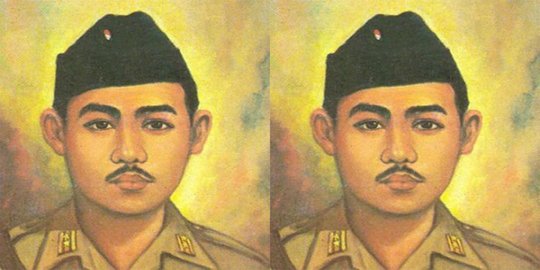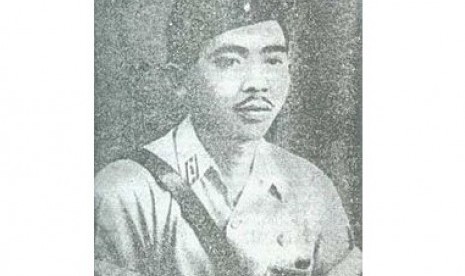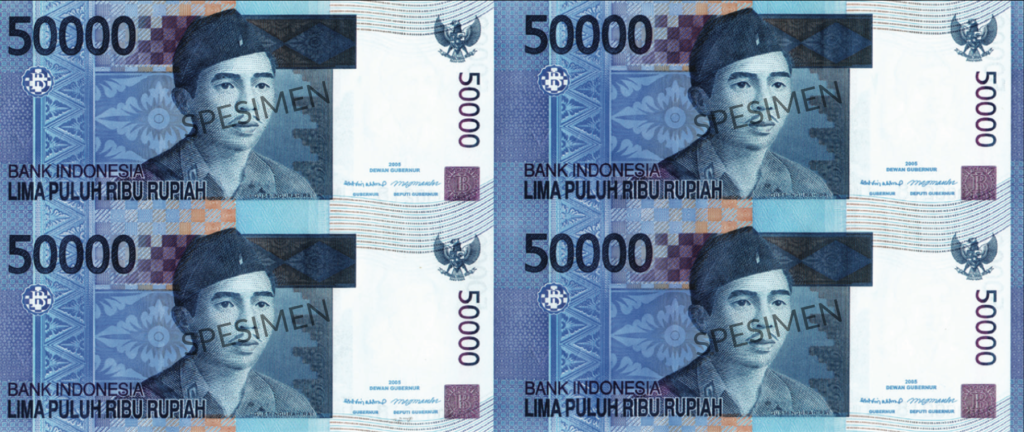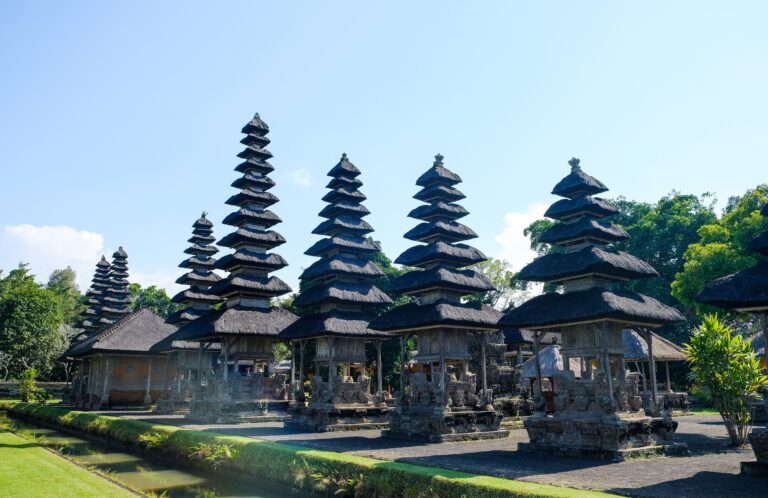Colonel I Gusti Ngurah Rai was an Indonesian hero and one of Bali’s most foremost figures in modern history.
His most significant action was to take control of the Indonesian troops in Bali that battled against the Dutch military during the Indonesian War for Independence.
He was tragically killed, along with all the men under his command, at the Battle of Margarana.
However, his legacy as a national hero led to the eventual ousting of the colonial forces from Indonesia and the birth of a new, independent nation.
When Was I Gusti Ngurah Rai Born?

I Gusti Ngurah Rai was born here in Bali in the village of Carangsari in the Badung Regency (where Canggu is).
Ironically, his early life was heavily influenced by the colonial forces on the island. He went to a Dutch Elementary School known as HIS Denpasar.
Then, transferred to a junior high school in Java and then he received Dutch military training in Magelang in Java and Gianyar in Bali.
He joined the Dutch-sponsored military forces in Bali as a second lieutenant after graduating and was given further training as an officer in that military.
I Gusti Ngurah Rai’s Military Career
The moment that news of the War for Independence reach Bali, Ngurah Rai formed the People’s Security Army.
This can be considered a forerunner of the modern Indonesian combined forces.
The force was intended to represent the Lesser Sunda Islands and he took orders from the new Republican Capital based in Yogyakarta.
On the 2nd and 3rd of March, 1946, the Dutch landed 2,000 troops in Bali and I Gusti Ngurah Rai returned to Bali to fight them.
His Dutch military training was intended to give him an advantage in combating the colonial power.
However, on his return, he found that there was serious work required to unify his force which was divided by politics.
He did so and then led a successful attack on the Dutch headquarters in Tabanan.
At this point, the Dutch reached out to I Gusti Ngurah Rai. Bali hadn’t been expected to cause much trouble for the colonists and they hoped to negotiate a simple solution to the uprising.
Ngurah Rai refused this offer.
The Puputan Of Ngurah Rai And His Men

On 20 November 1946, the Dutch retaliated Thousands of well-armed troops arrived from Lombok and they were supported by aircraft.
The Balinese forces had no hope of resisting this overwhelming display of force and I Gusti Ngurah Rai realized that his position was untenable.
Instead of ordering his men to surrender, he ordered a Puputan which meant that every last man was required to fight to their death including their commander.
Ngurah Rai died fighting alongside his men at what is now called the Battle or Margarana.
It’s worth noting that while many historians attribute this sacrifice to enabling Indonesian forces to unify across the archipelago, some argue that it wasn’t necessary and that had the colonel opted for guerilla warfare, the Dutch might not have been able to retake Bali.
The Burial Of Ngurah Rai And His Men
Ngurah Rai and his men were buried at Marga where they had fallen in combat. The site is well-preserved and a great place to visit to learn more about the man.
In August 1975, a presidential decree was issued by Suharto declaring I Gusti Ngurah Rai to be an official hero of the Republic of Indonesia.
Ngurah Rai leaves a lasting legacy for the Balinese people. He is seen as a symbol of the ultimate sacrifice when a man surrenders his life for the dream of something greater.
His honour, courage and resilience help to underpin a sense of national identity and cultural unity.
It helps to illustrate the issues caused by colonialism too and why it must never happen again.
And most of all, his story is one that offers hope to future generations of Balinese and encourages them to stand up for their own values, even at terrible personal cost.
Tributes To I Gusti Ngurah Rai
Ngurah Rai International Airport (Denpasar International Airport)

There is only one airport in Bali and it’s often referred to as Denpasar International Airport but that’s because the nearest city is Denpasar.
It is, in fact, Ngurah Rai International Airport and it is the second busiest airport in Indonesia with only Soekamo-Hatta in Jakarta being busier.
The airfield at the airport has been in service since 1931 and was built by the Dutch colonists and their administrators. It was used, briefly, in World War 2 to conduct bombing raids but fell to the Japanese in February 1942.
The Dutch had intended to destroy the airfield but the orders were mistranslated and the Japanese seized it with very little damage.
After the war, the first terminal was constructed in 1949 and a large-scale renovation was carried out in 1959.
These facilities weren’t enough and a major overhaul was carried out in the 1960s, with the airport gaining the name “Ngurah Rai” in 1968 when it was opened by President Suharto.
The airport has been overhauled and redeveloped and extended several times from 1968 to the modern day. This includes the development of both an international terminal and a domestic terminal for domestic travelers.
Margarana Memorial Park & Museum (Tabanan)
This is a memorial park dedicated to I Gusti Ngurah Rai and the men who perished with him. It is also home to the Taman Bahagia cemetery where they are all buried.
The park houses a monument to the man and those who followed him, two pavilions, a pleasantly shaded garden for silent reflection, and individual memorials to each of the 1,372 men who were involved in the puputan.
There is also a nice museum on the site, though we cannot guarantee that it will be open when you visit (it wasn’t when we went).
This is because, mainly, tourists don’t visit the park and it sees mainly scheduled visits from local school children seeking out information about the national heroes.
The site is open from 8 a.m. to 5 p.m. each day and you are welcome to visit at any time between these times.
There are also some small food stalls available that are run by the local villagers and are very reasonably priced.
Where Is It? G5M7+XFX, Kelaci, Marga Dauh Puri, Marga, Marga Dauh Puri, Kec. Marga, Kabupaten Tabanan, Bali 82181, Indonesia
Online: N/A
The 50,000 IDR Note

I Gusti Ngurah Rai is a national hero of Indonesia, not just Bali and his status having commanded Indonesian forces against Dutch forces resulted in the independence of the nation.
Thus, he is featured on the 50,000 Indonesian Rupiah note.
FAQs
Who Is The “Hero Of Bali”?
Ngurah Rai is usually considered to be the person most deserving of the title “hero of Bali”.
What Is Denpasar Airpot Called?
Denpasar Airport is called Ngurah Rai International Airport.
Are Denpasar And Ngurah Rai The Same?
No, Denpasar is a town. Ngurah Rai is a person. But Denpasar Airport is Ngurah Rai Airport.
Does Bali Have Two Airports?
No. Ngurah Rai is the only commercial airport in Bali. A site in Buleleng has been found and identified as a possible home for a new airport but the construction process has not begun.
There are also debates as to whether the island might not be better served investing in better physical links to Java which has several underutilized domestic airports that could serve international travellers.
Indonesia’s Hindu realm of Bali was one of the last parts of the nation to fall to the Dutch colonial forces and it was one of the first to resist the recolonization of the nation following World War 2.
I Gust Ngurah Rai may not have had the resources to overcome the Dutch forces but his efforts paved the way for national outrage and the unification of the Indonesian forces from disparate parts of the archipelago.
He is a national hero because his actions directly led to Indonesian independence and the short history of his life, will always have a major significance for this young nation and its people.












